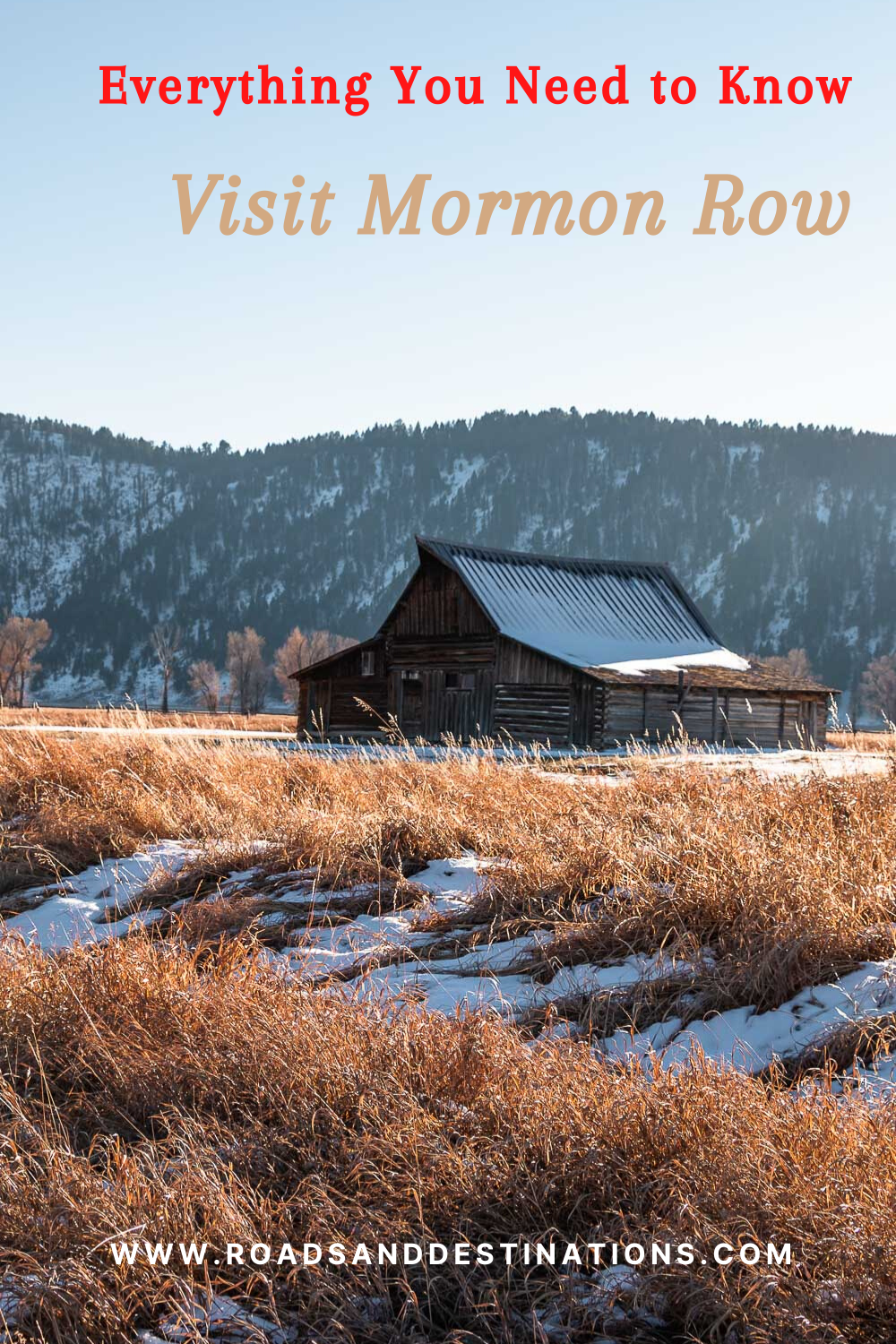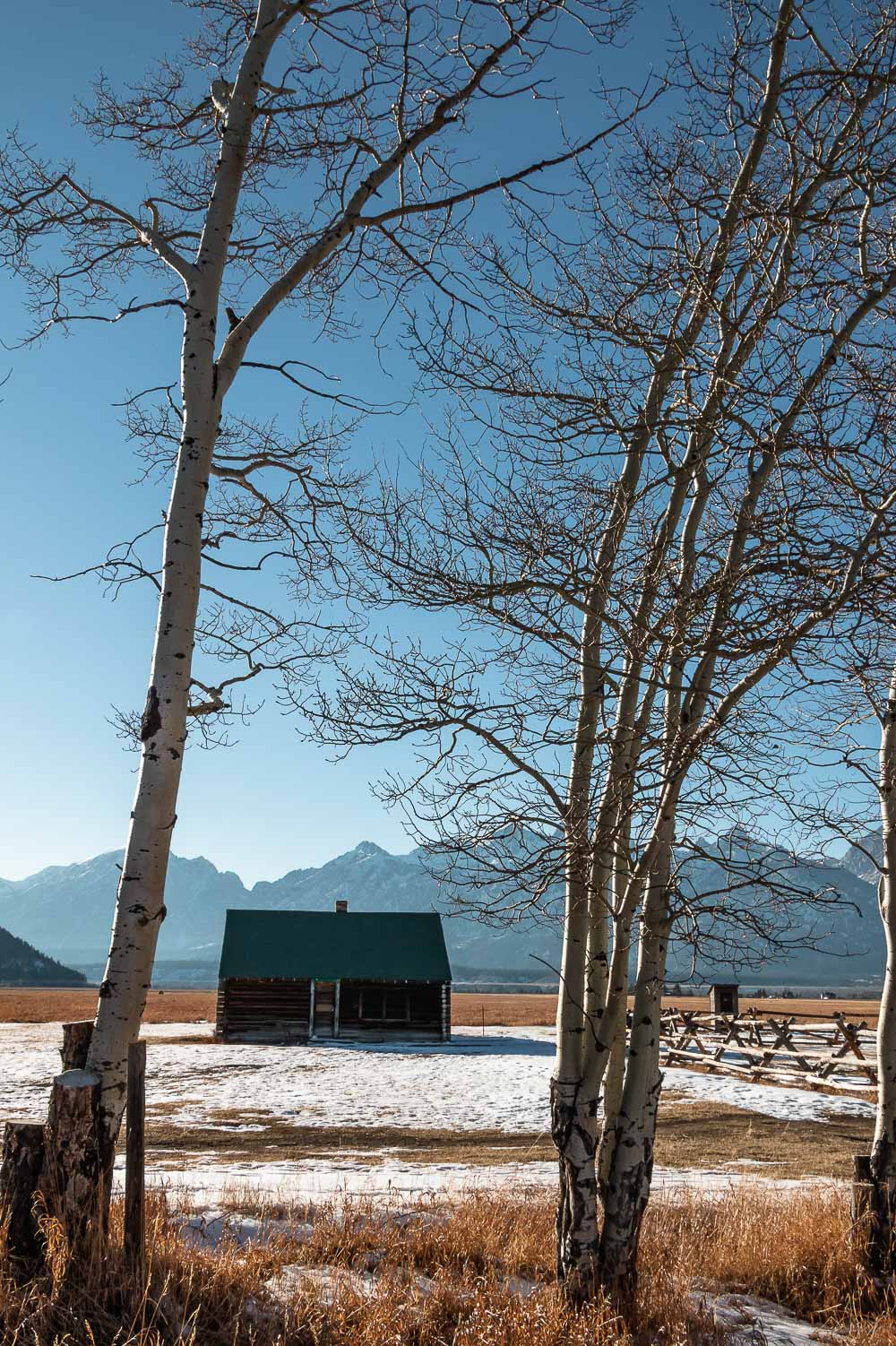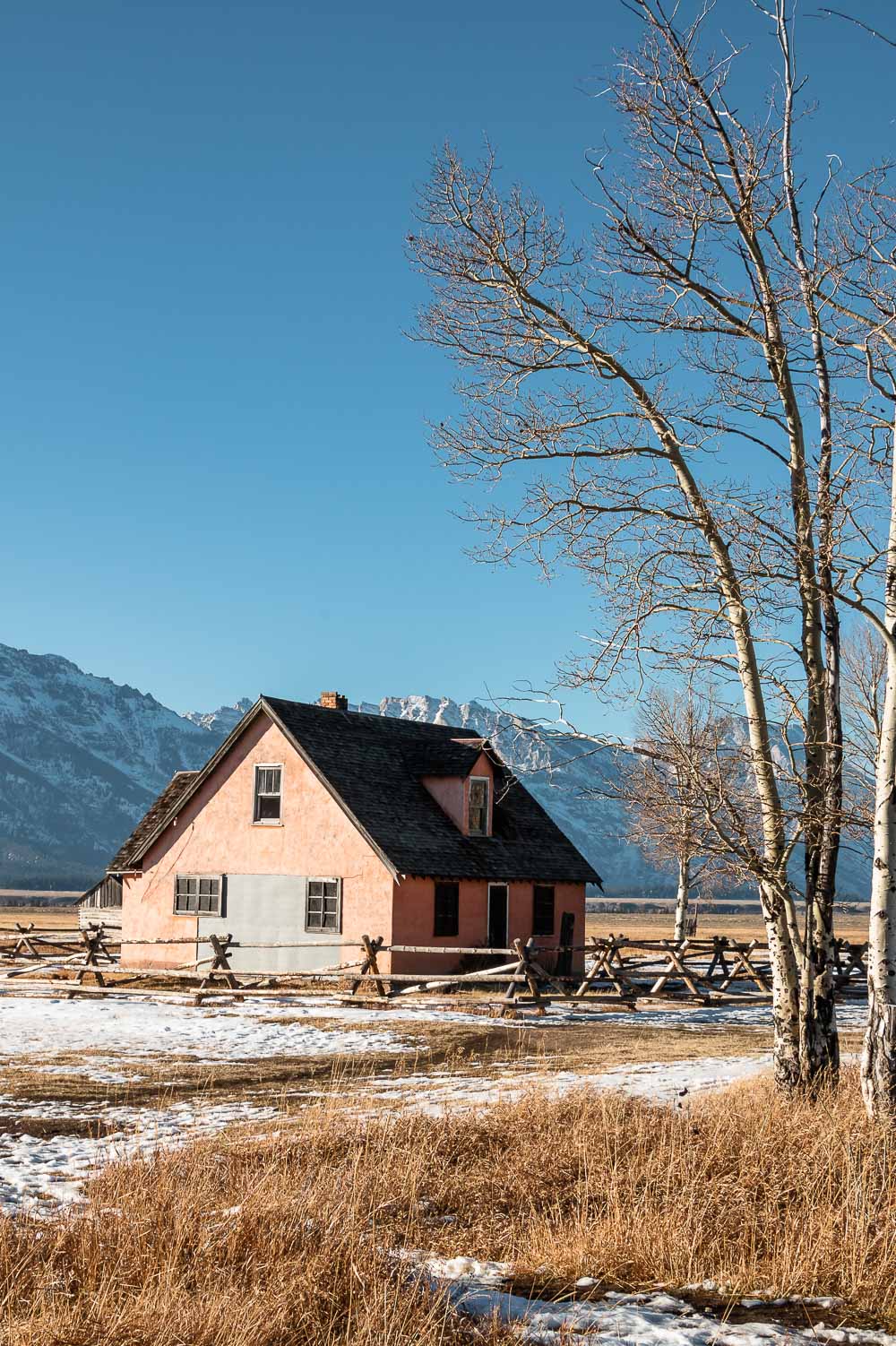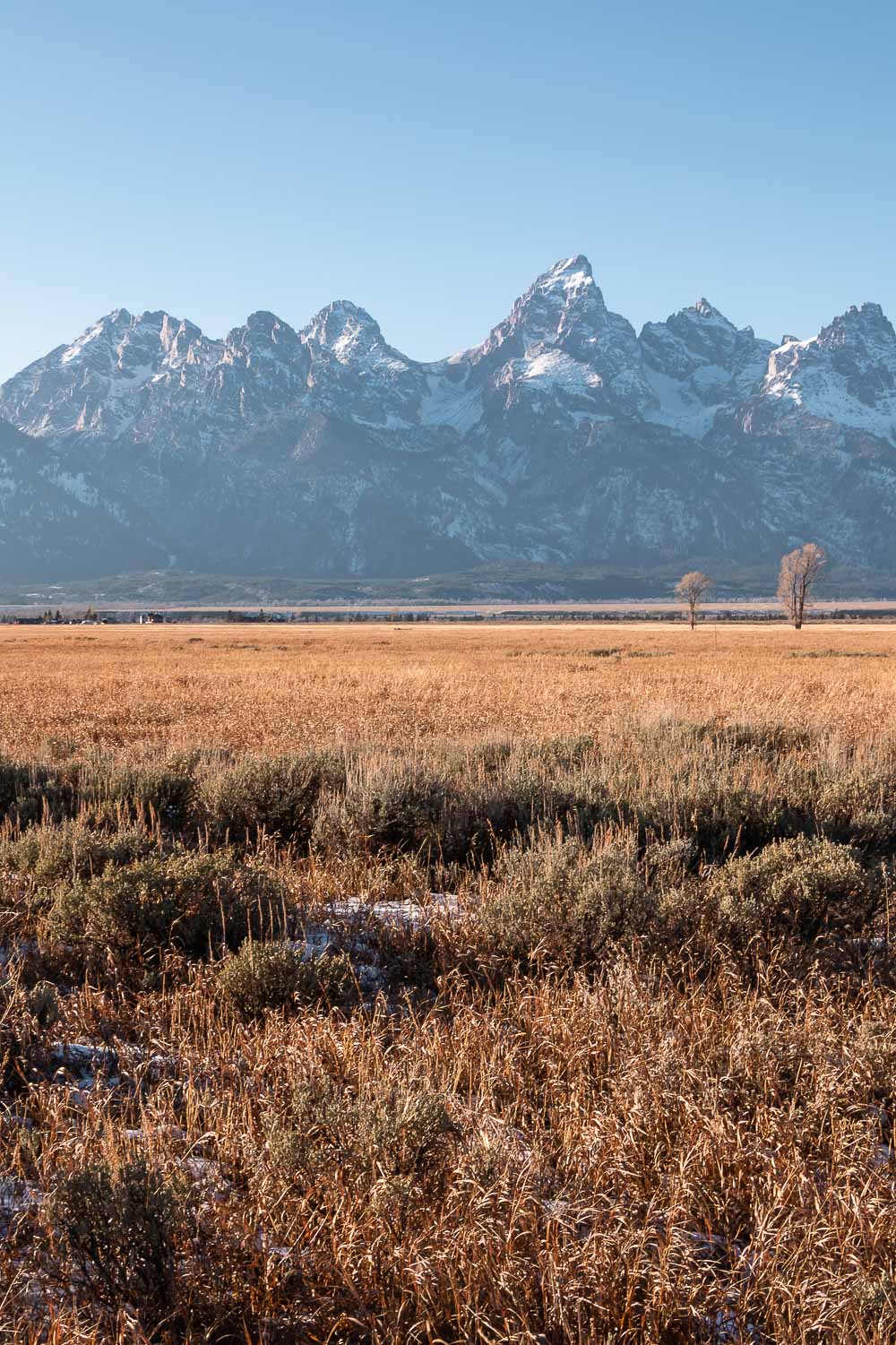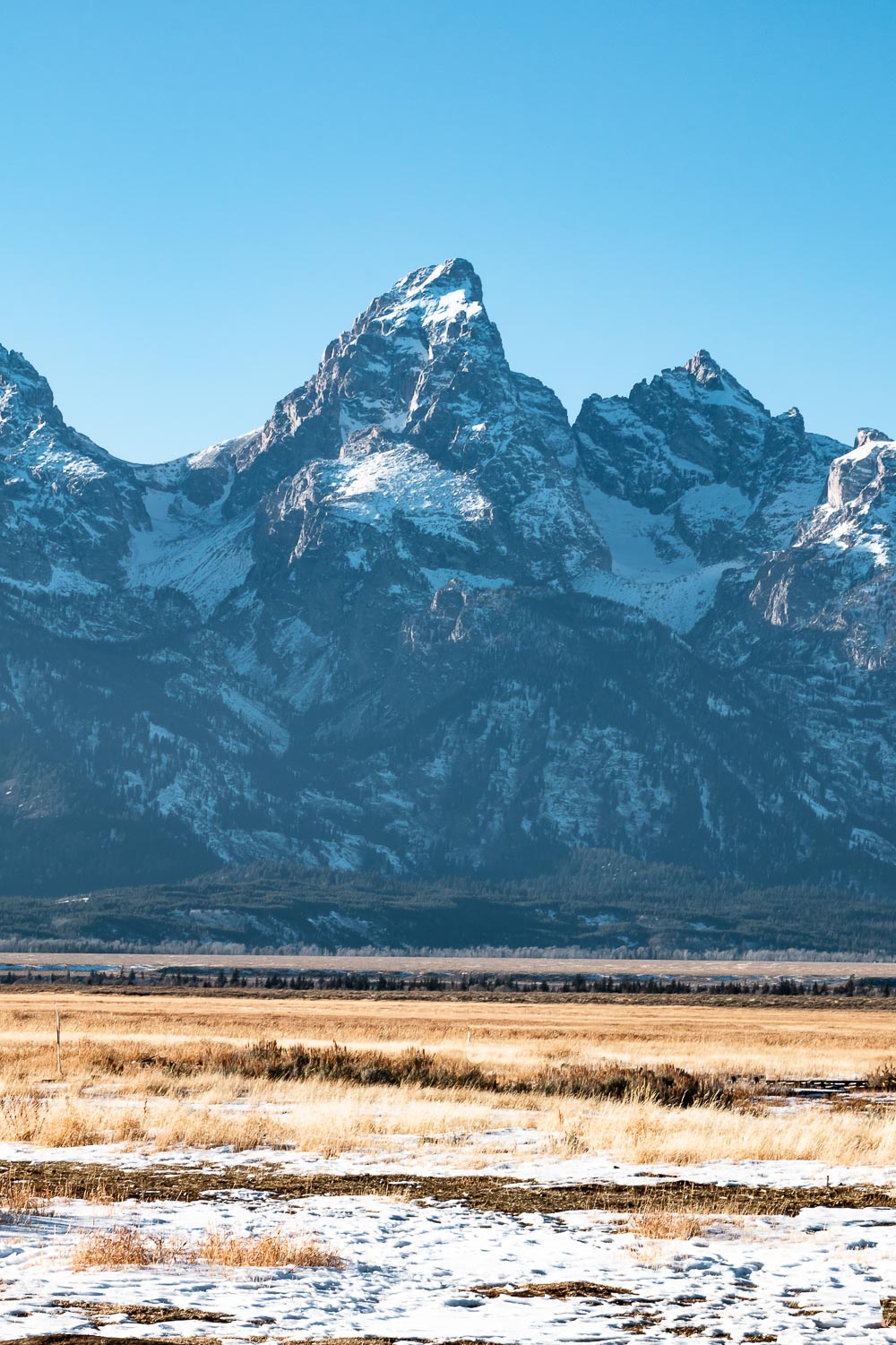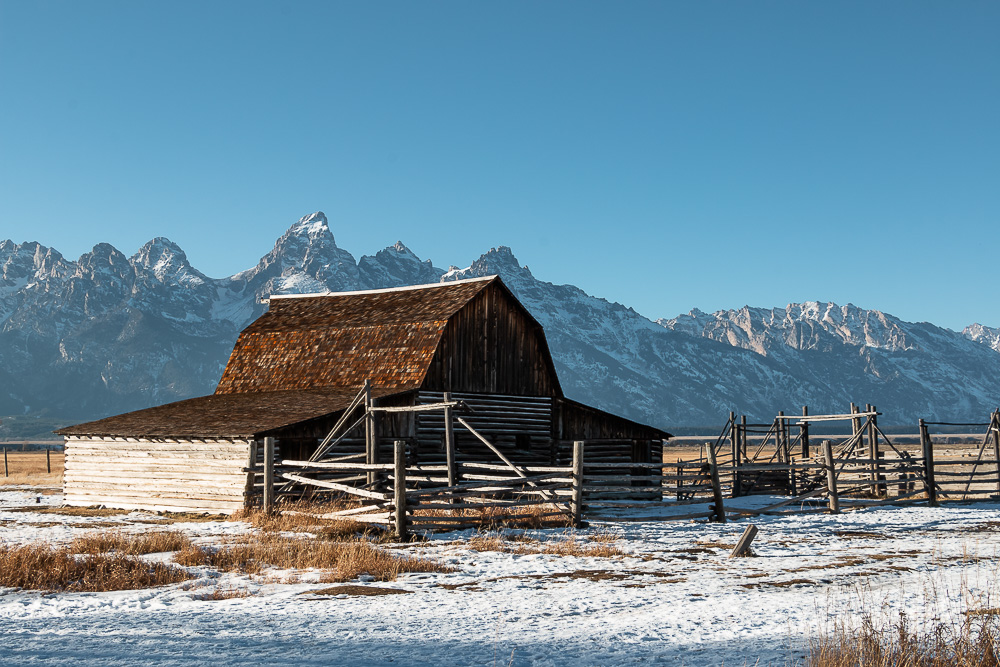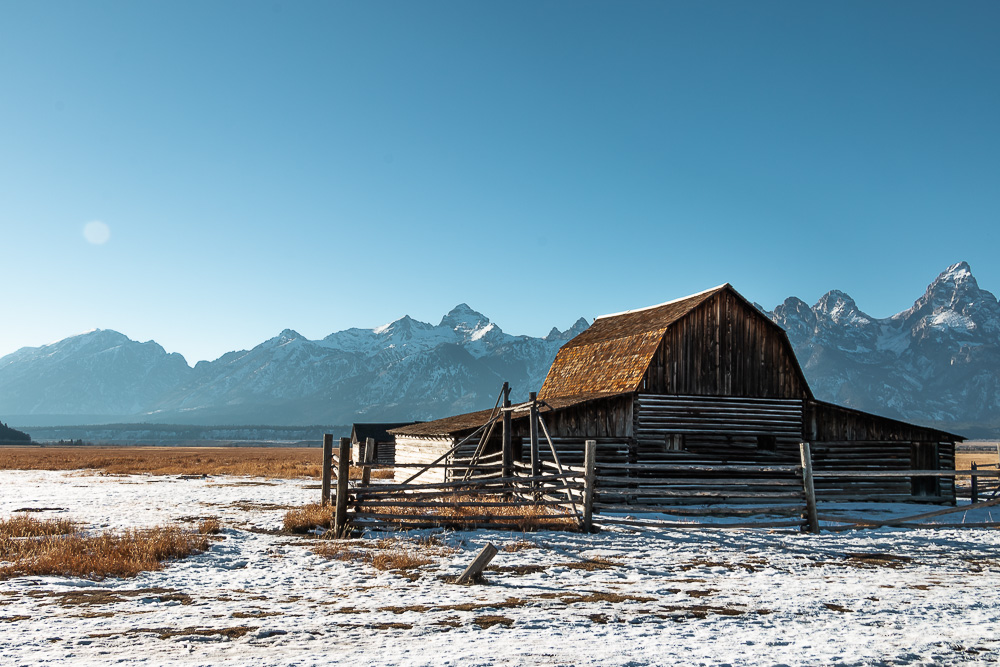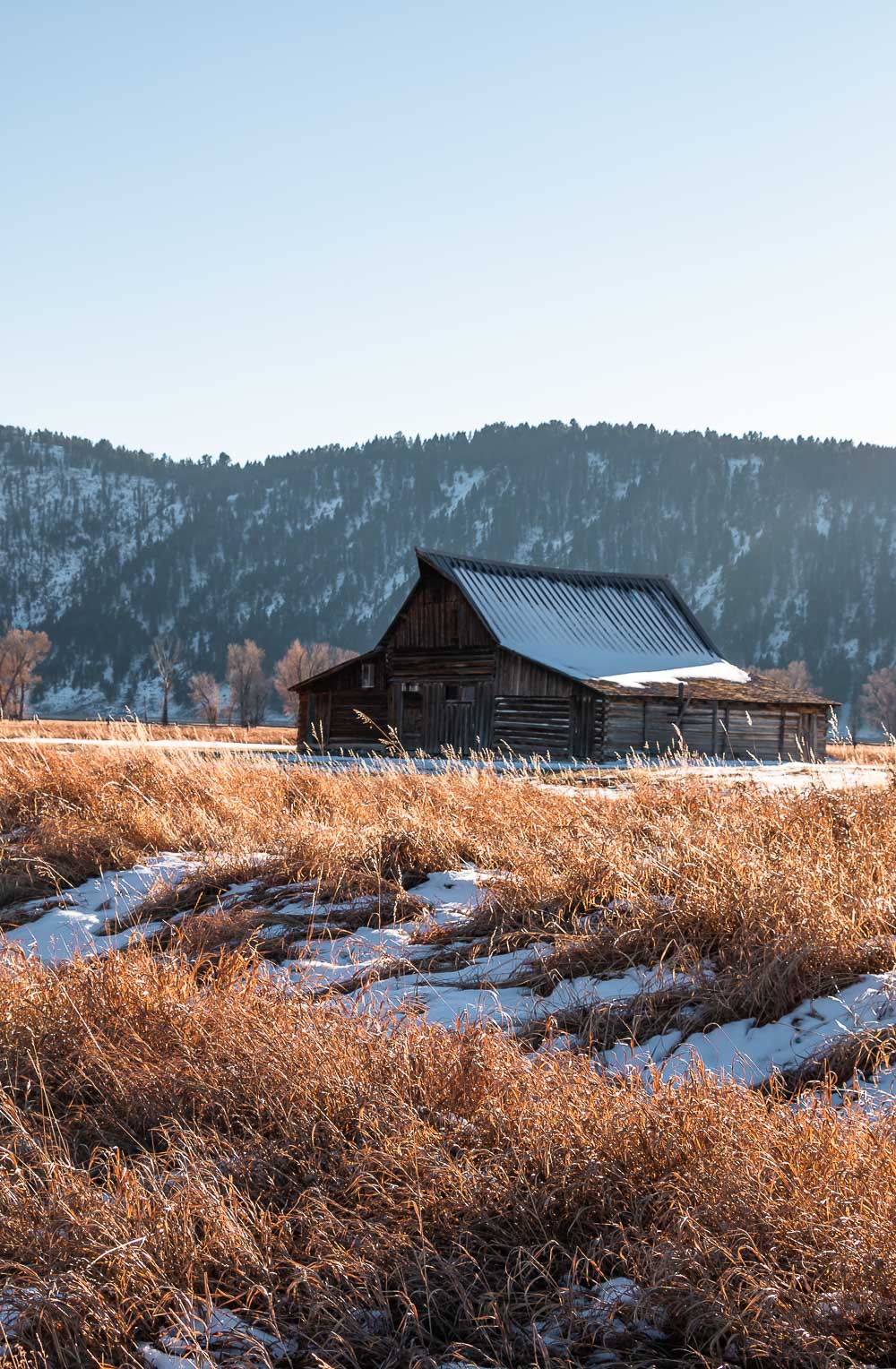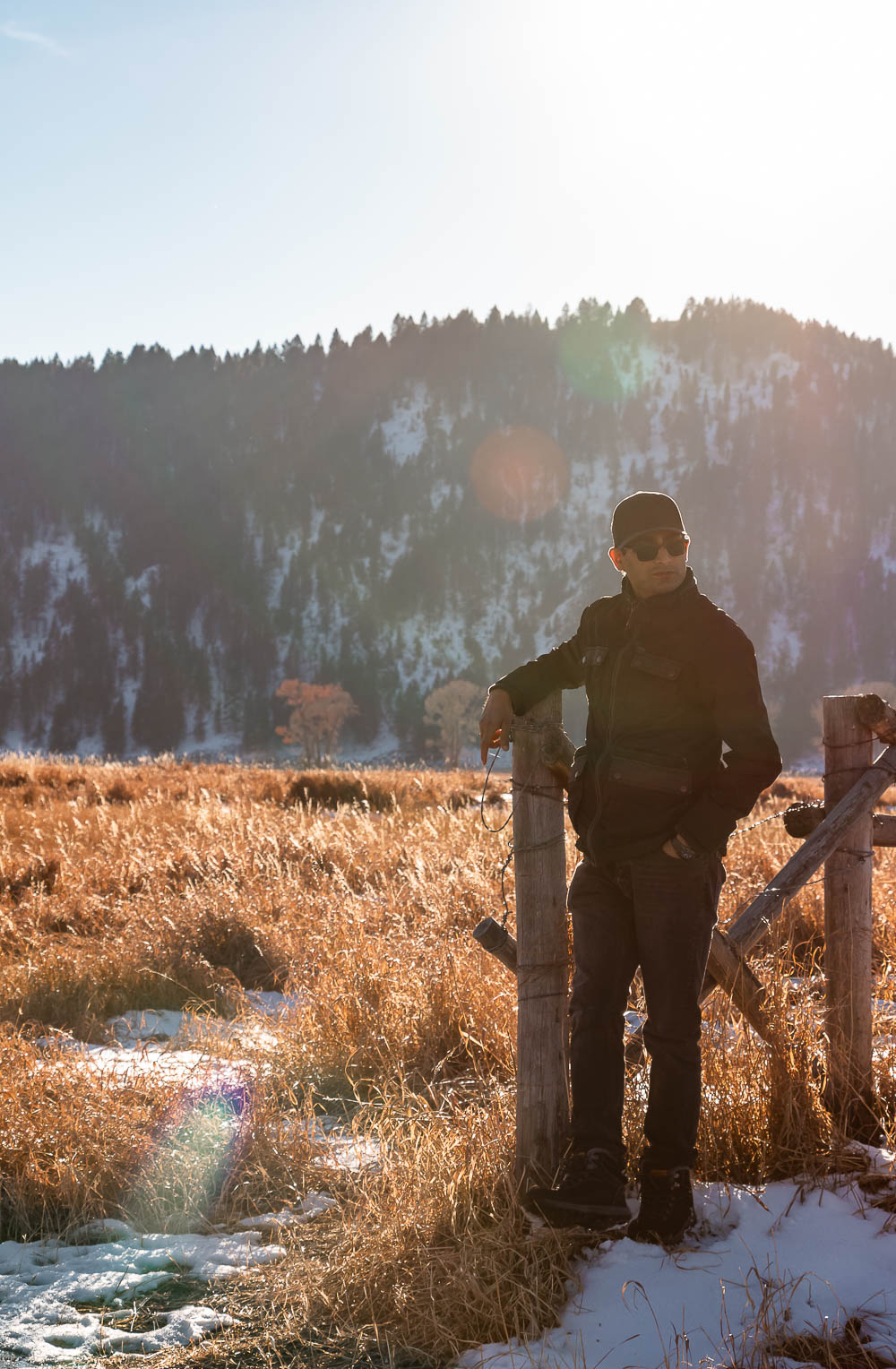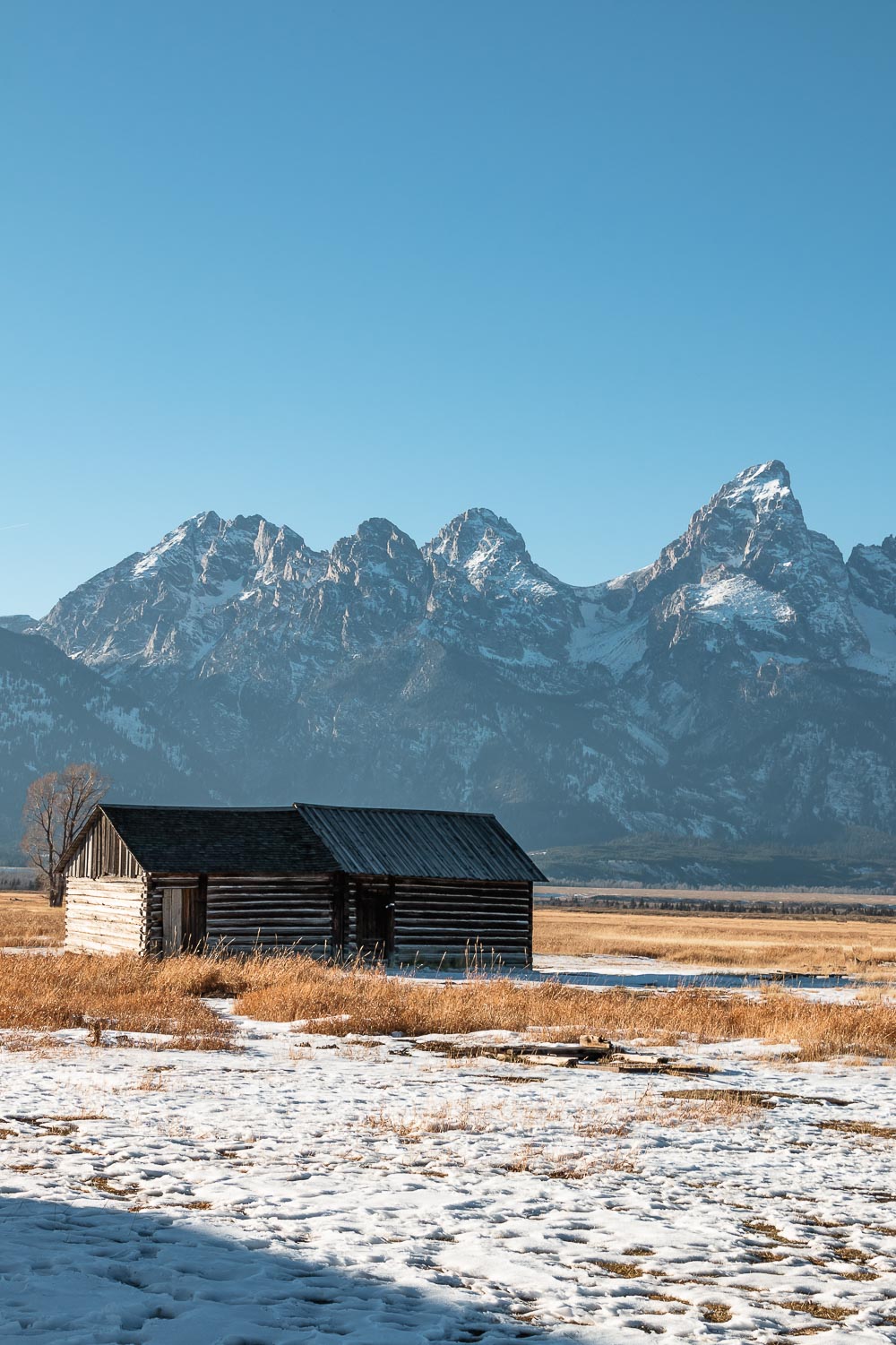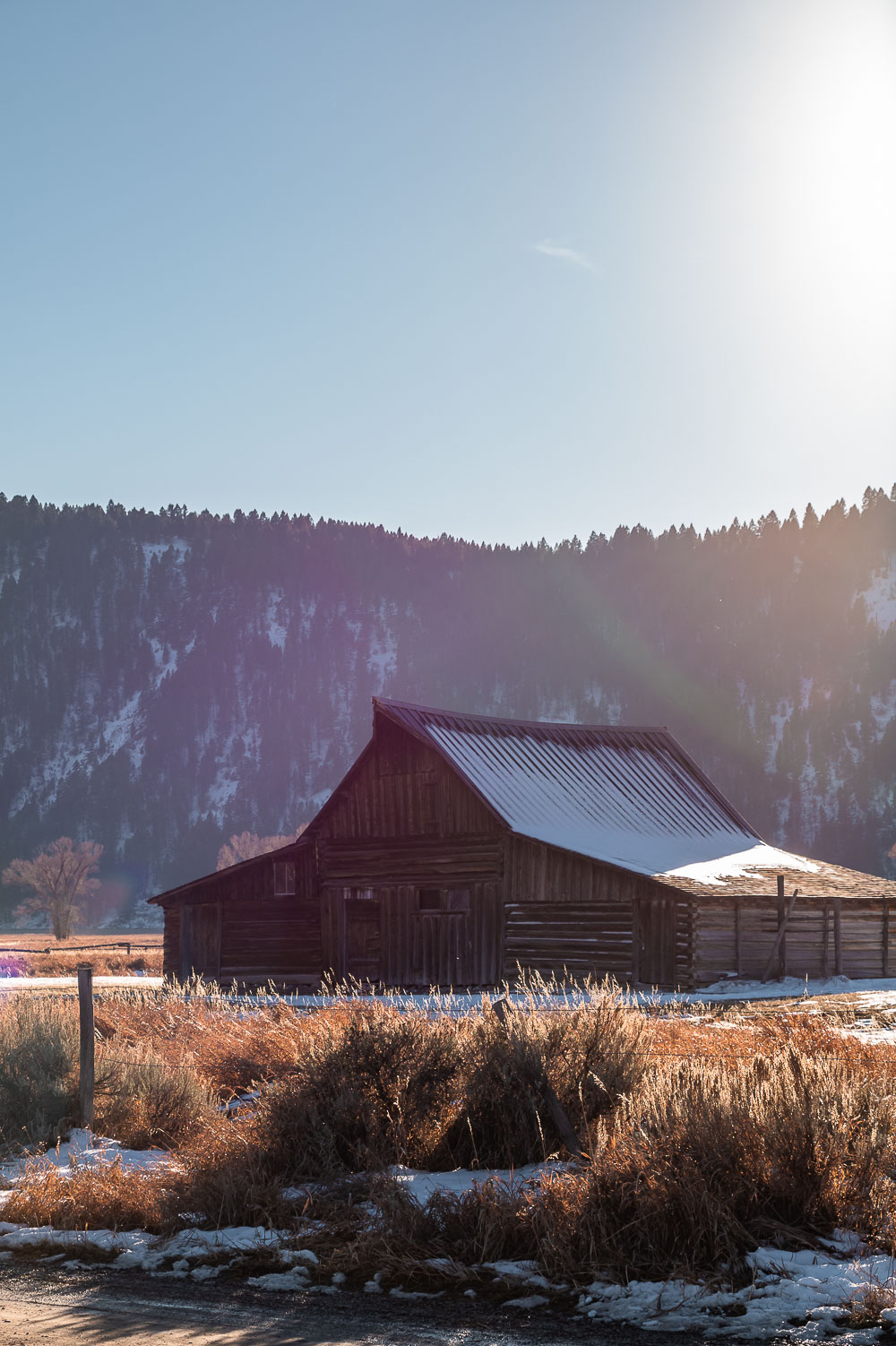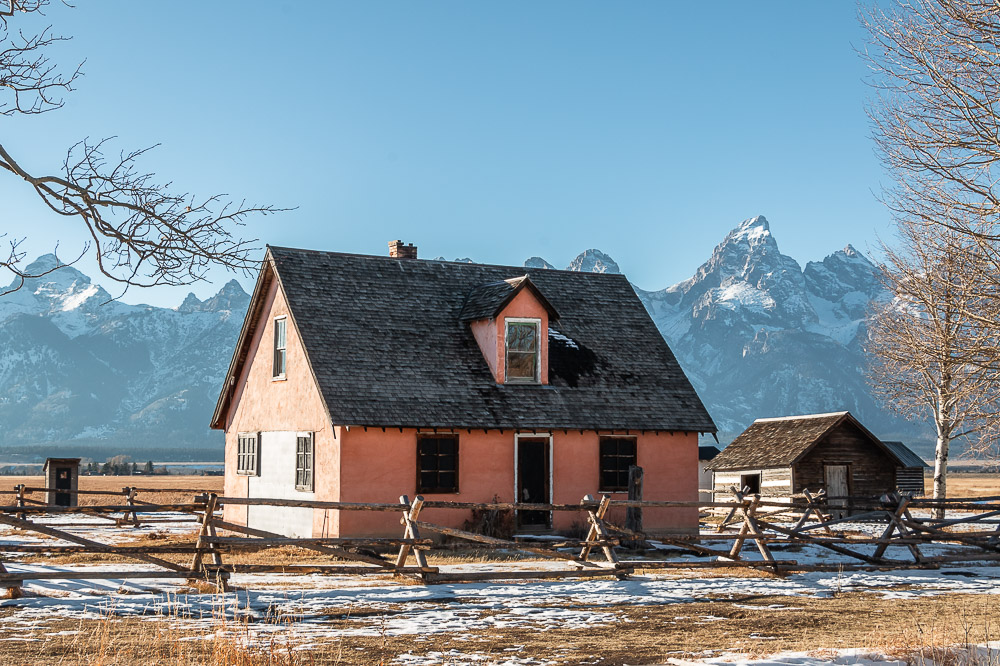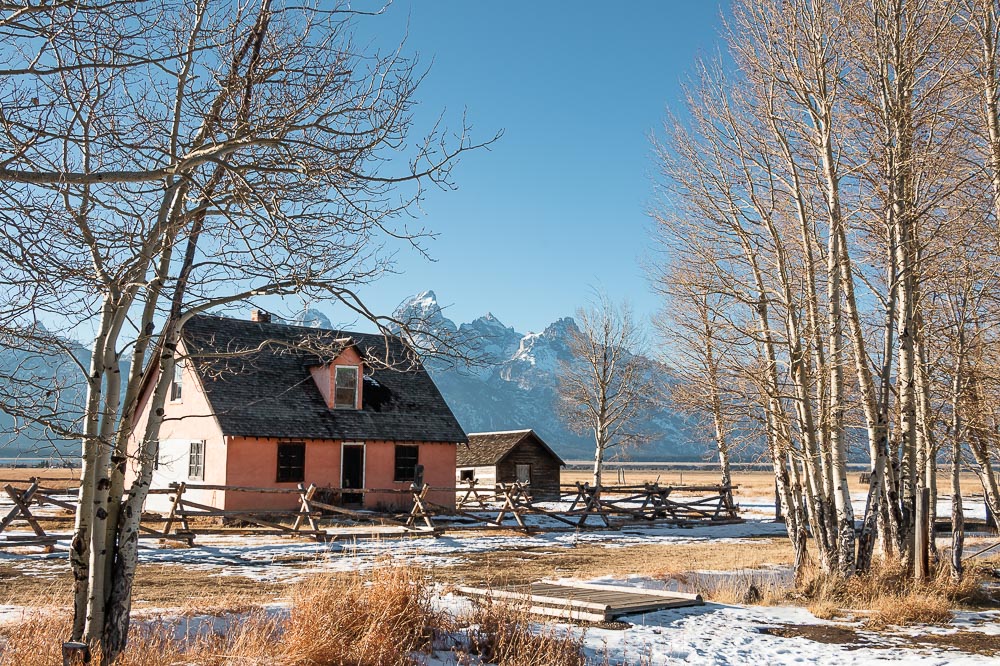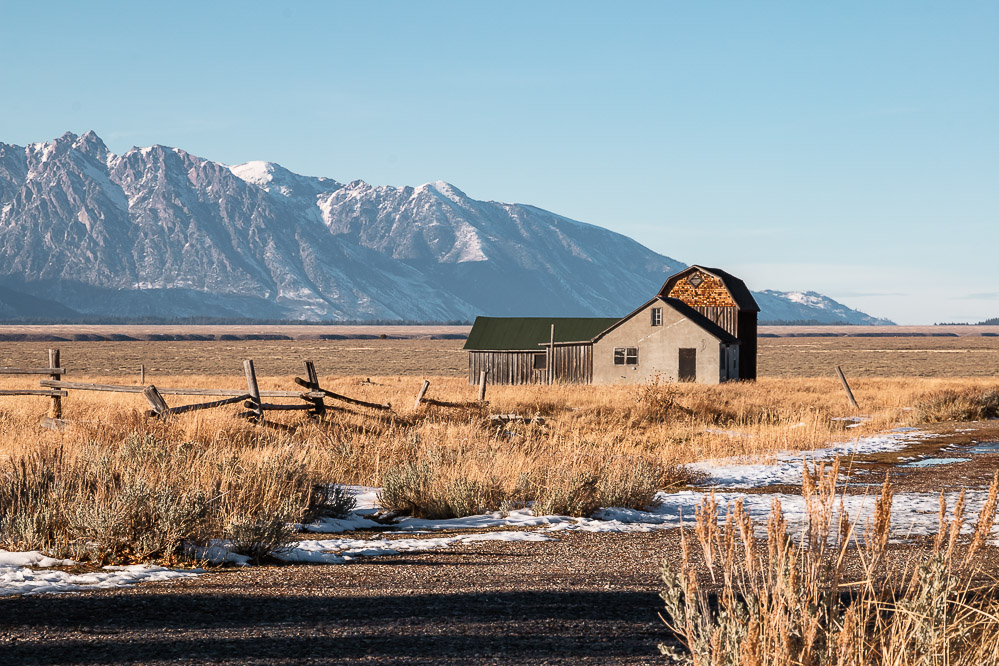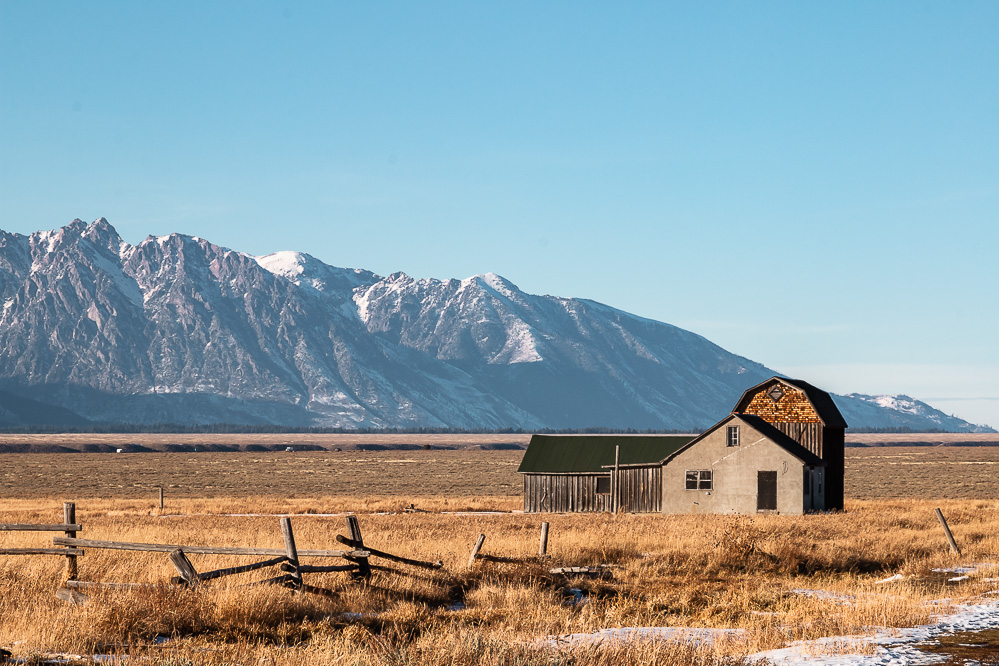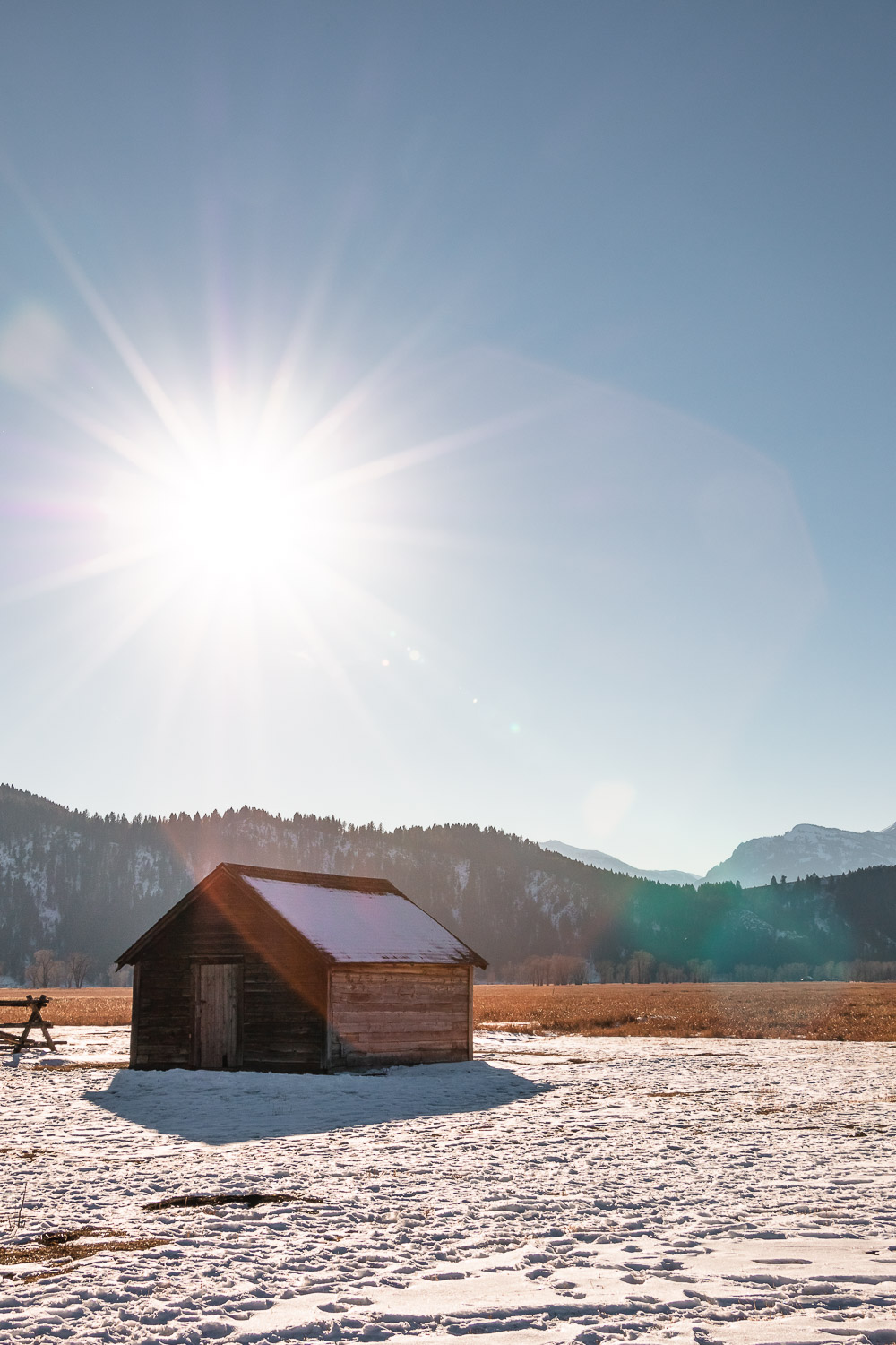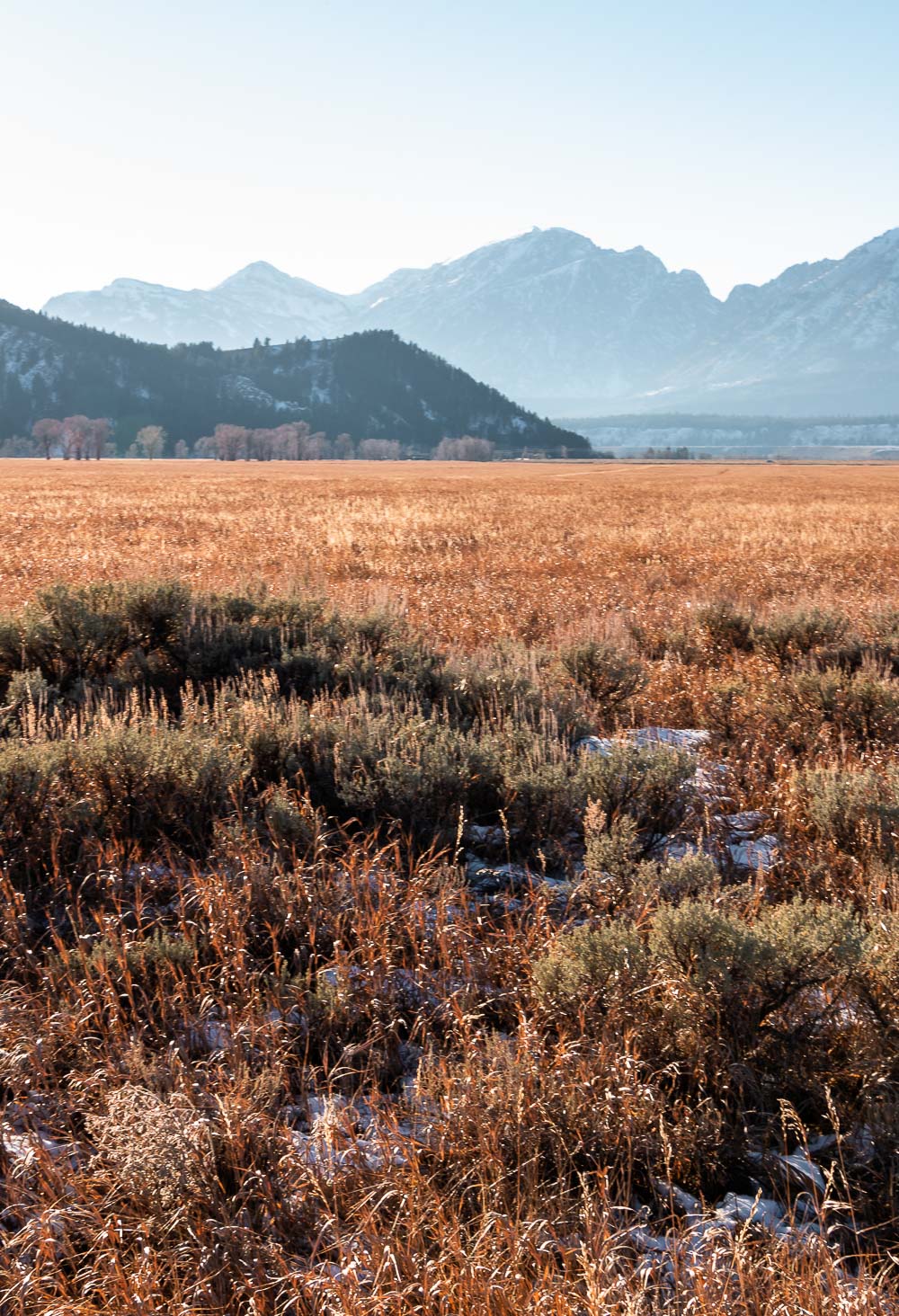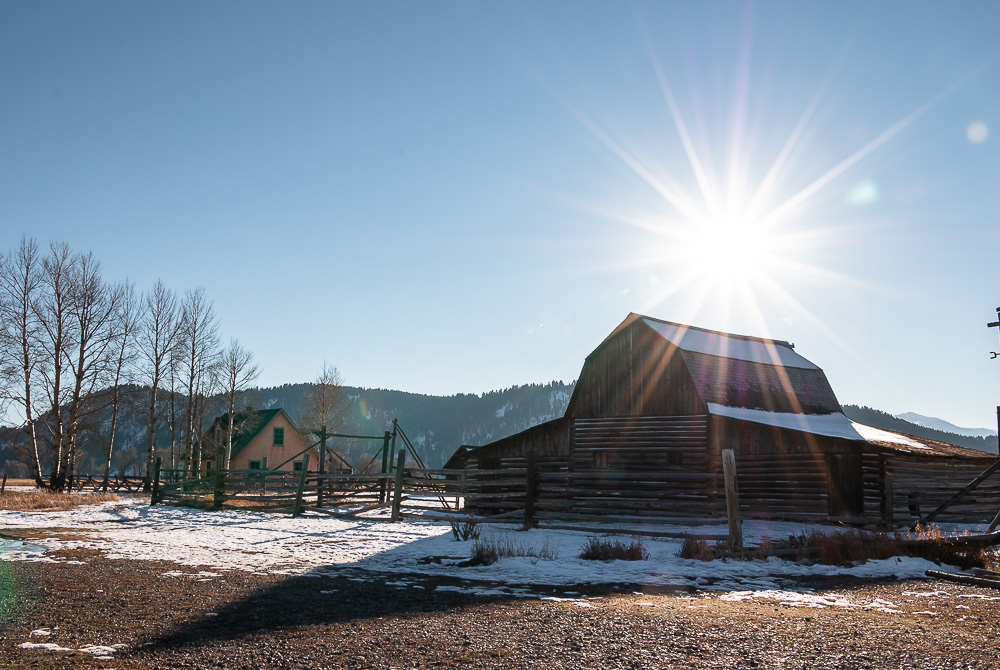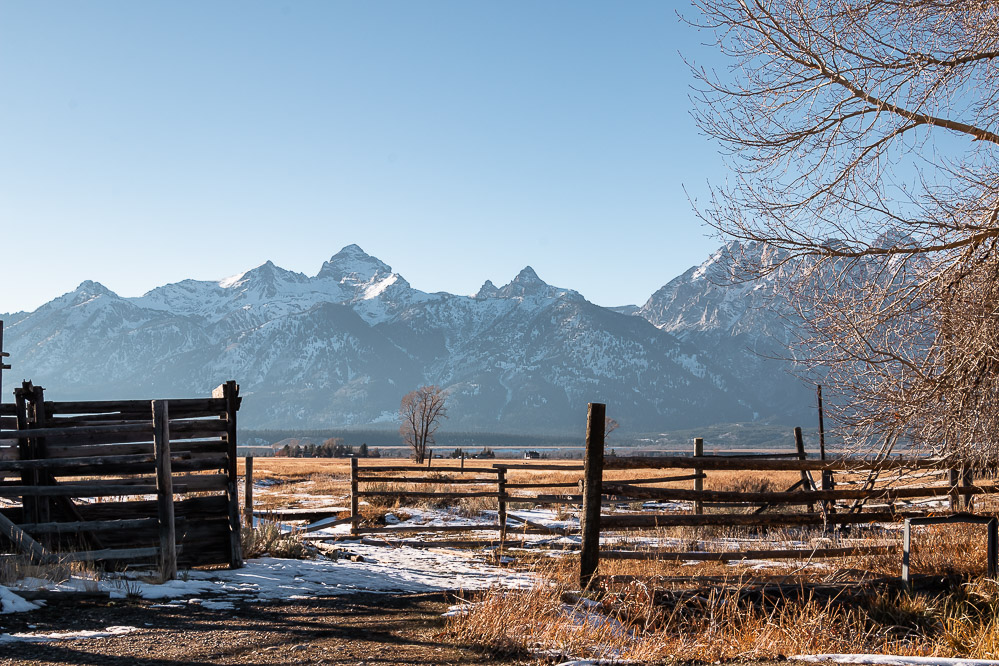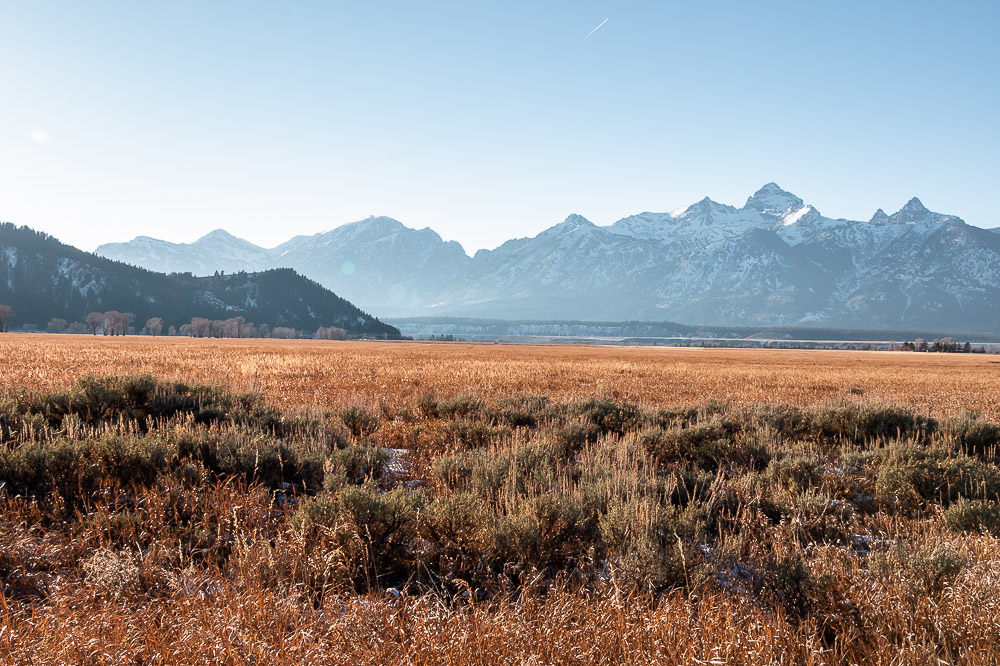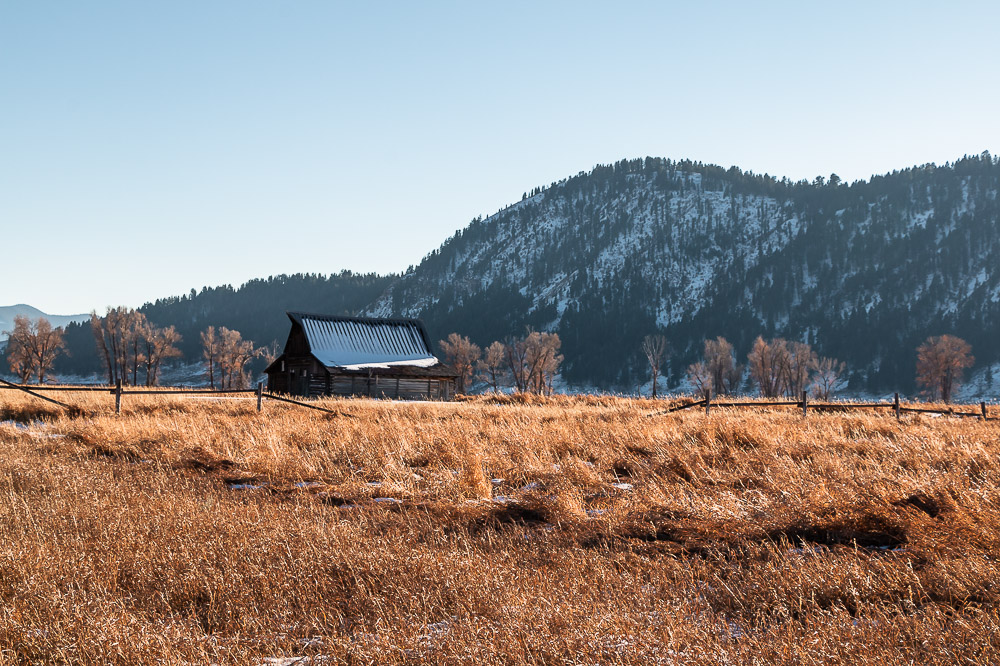Visual delight or a dream destination of every historian and landscape photographer? Set on the barren land with the Tetons rising in the background, a number of abandoned homesteads ceaselessly allures you to visit Mormon Row in Grand Teton National Park.
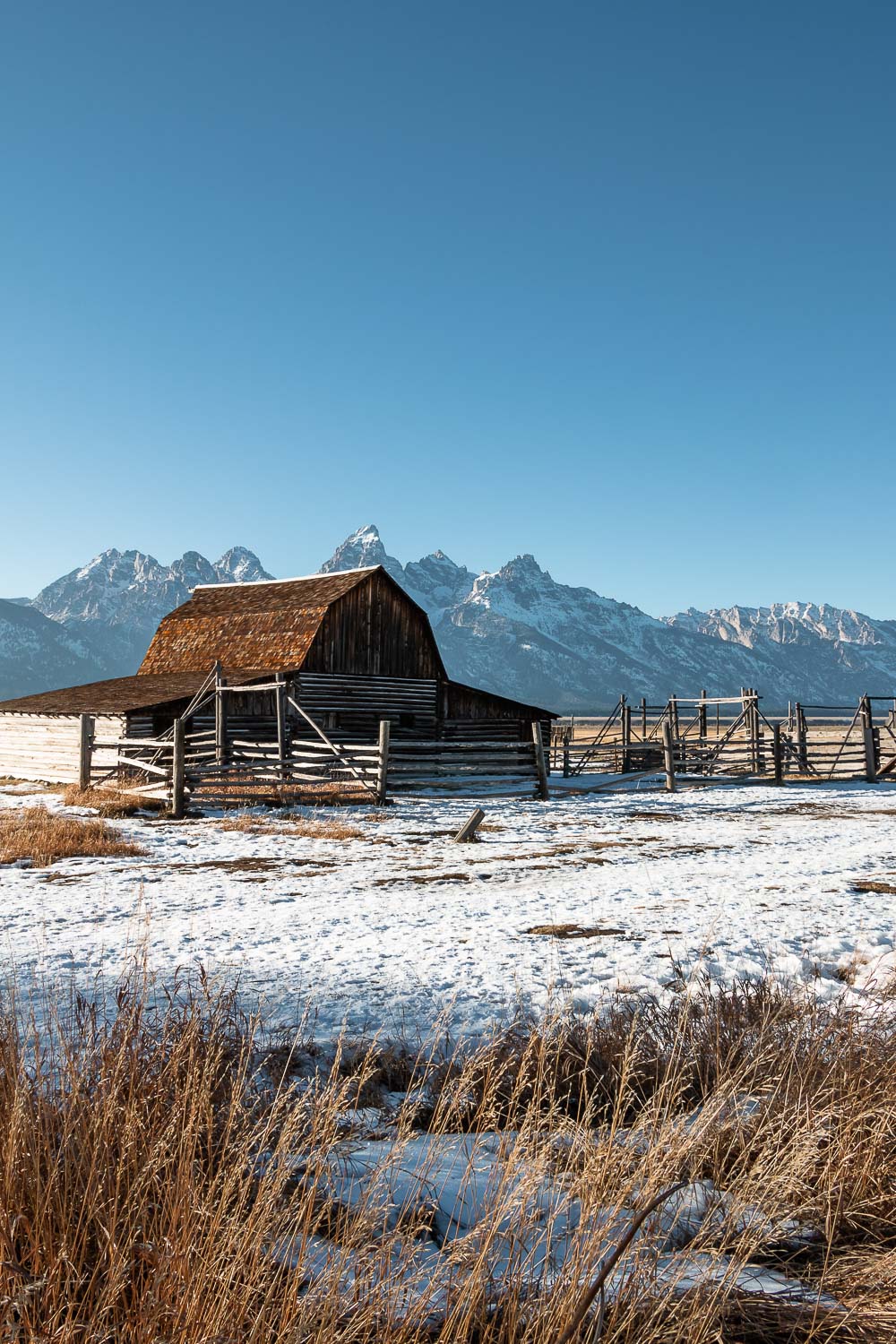
How to Visit Mormon Row Historic District
Formerly known as the town of Grovont, the Mormon Row Historic District is one of the most photographed areas of Grand Teton National Park. Astounding scenery and abandoned buildings define the place, unveiling human history of the park. Majestic Blacktail Butte shelters the former settlement from gusty winds, encouraging you to visit Mormon Row at any season. The open space abundantly covered by sagebrush let you meet some of the representatives of the local animal kingdom. Simplicity and subtle beauty of the area inspire some travelers while disappoint others. Nevertheless, Mormon Row is worth a visit even if it is just for a few minutes.
The Mormon Row Historic District nestles at the southeast corner of Grand Teton National Park, a stone’s throw away from Jackson. The secluded location along with somewhat fertile land allured early dwellers who settled here in the late 1890s.
About half a century later, only vernacular architecture reminded of the human presence in this area. While people could still visit Mormon Row, agricultural development came to a halt. Finally in 1997, the area was added to the National Register of Historic Places as an Historic District.
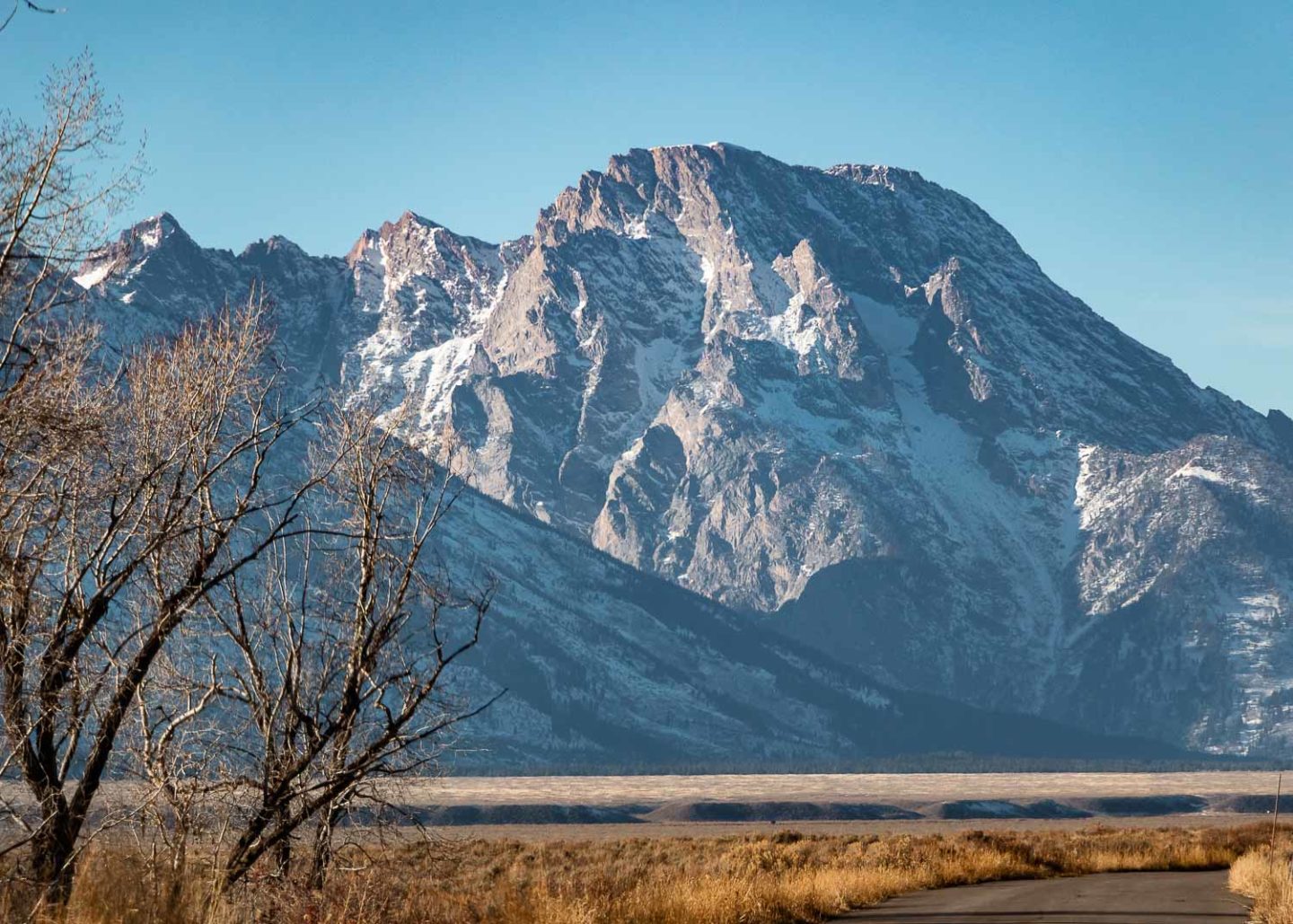
Reasons to Visit Mormon Row
Mormon Row represents a complex combination of natural landscape with gentle, yet human impact on it. While the abandoned homesteads intrigue and arise curiosity in history enthusiasts, some visitors find them irritating. Whether you fall into the first or second category, there are a few reasons why you should visit Mormon Row.
1. One of the Most Photographed Sights
The lonely standing barns with the snow-capped mountains in the background are a signature sight of Grand Teton National Park. People all over the world visit Wyoming to paint or capture a few masterpieces of this place without even realizing that it is that famous Mormon Row. The pictures of this iconic place flood the Internet, adorn the walls of local hotels, and inspire endless outdoor adventures. Other photogenic sights that compete with Mormon Row for visitors’ attention are Schwabacher Landing, Snake River Overlook, and Oxbow Bend.
2. Scenic Views of the Grand Tetons
Sawtooth peaks of the Teton Range come into view in this part of Grand Teton National Park. Sharp and jagged near one side of the historic settlement, they show their gentle slopes near the other. The irregular summits of the mountains frequently play visual games when you visit Mormon Row. The majestic Tetons project awe and grandeur as you look at them from afar or parking lot. However, they seemingly shrink as you come closer to the barns.
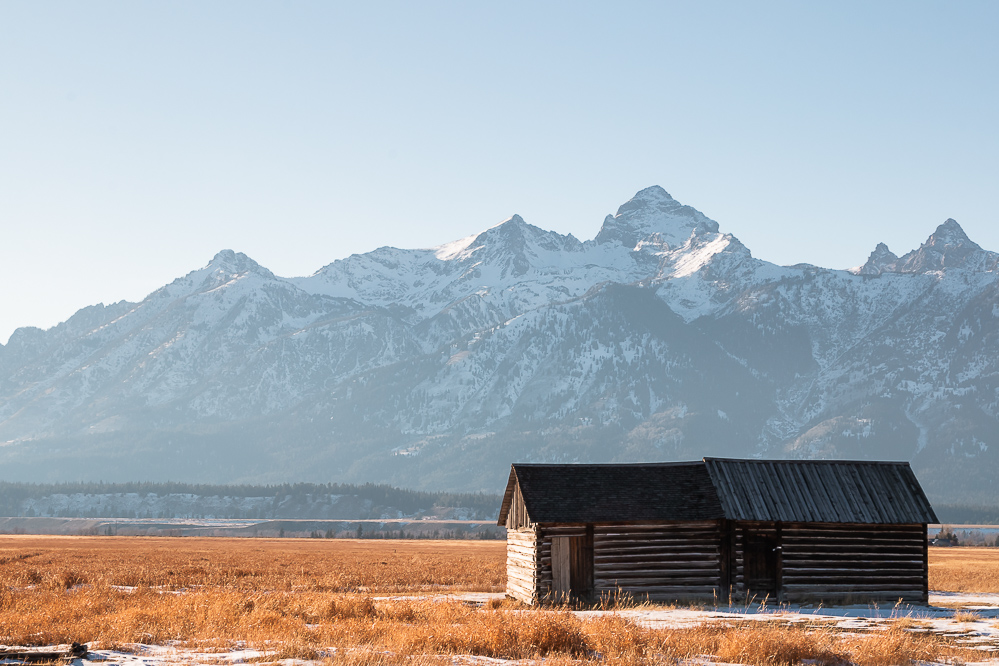
3. Visit Two Famous Barns on Mormon Row
Seeing or taking pictures of the famous Moulton Barns is the primary reason to visit Mormon Row for many of its guests. The historic structures sit a few steps from each other and provide a stark contract to the rocky giants behind them.
4. History Buff’s Dream Destination
Visit Mormon Row to have a glimpse into homesteading and pioneer life in Jackson Hole. Established in the late 1890s, the settlement secured 27 homesteads along with a church and a school. Although the church, built in 1916, was moved to Wilson, the areas still preserves some signs of its existence. The remaining structures, impaired to different extents by merciless time, also don’t let the history fade away.
5. Visit Mormon Row and See Wildlife in Its Natural Habitat
I would like to assume that even bison pay respect to human history of Mormon Row and visit the place from time to time. In reality though, the historic settlement belongs to enormous wilderness, a home to bison, deer, elk, and prairie dogs that occasionally roam near Mormon Row.
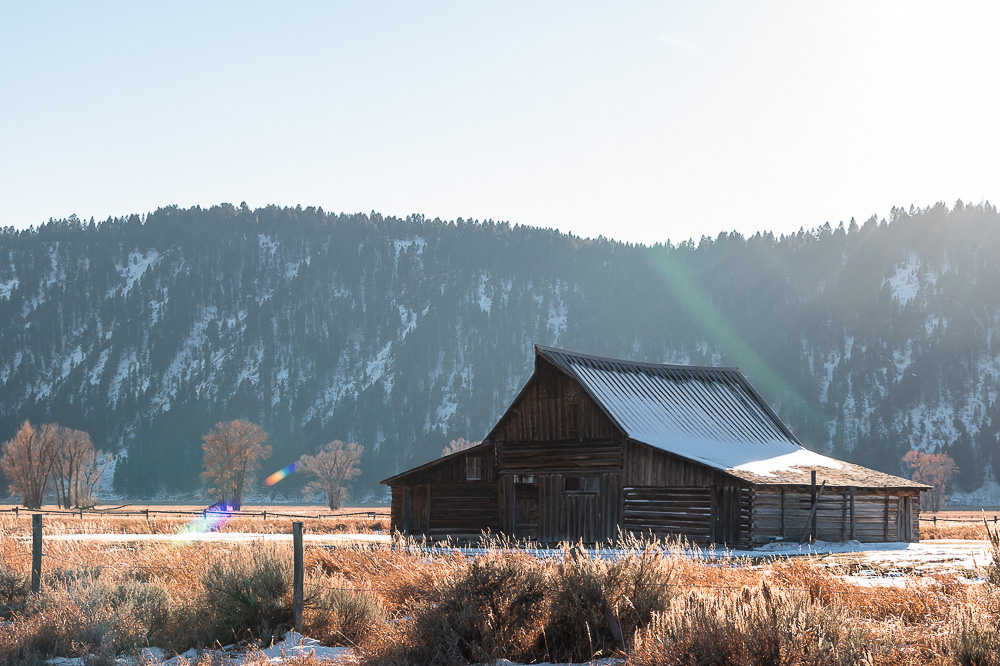
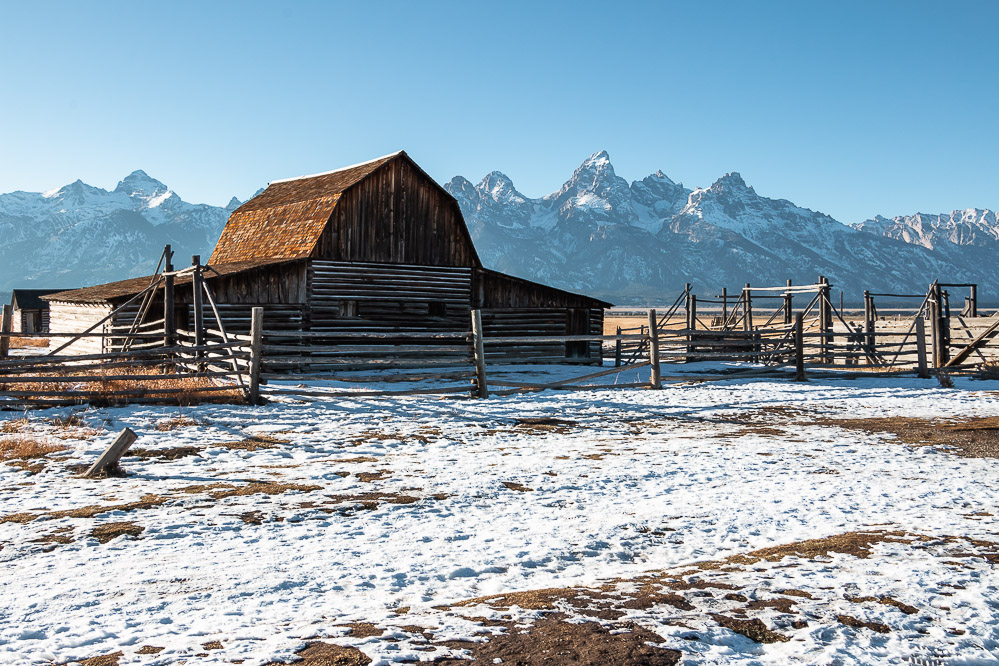
Structures to See during Your Mormon Row Visit
T.A. Moulton Barn
The T.A. Moulton Barn is part of the Thomas Alma and Lucille Moulton homestead. The rustic structure sits west of the Mormon Row road. It took the former owner and his sons 30 years to construct the famous triangle-roof barn. Little did they know that after all these years of hard work, the building would become one of the most photographed barns in America.
John Moulton Barn
John Moulton arrived in Jackson Hole with his brother, Tomas Alma, in 1907 and built his homestead just north of this brother’s. Similar to the T.A. Moulton Barn, the John Moulton Barn inspires countless visits to Mormon Row from all over the world. The founder of this barn was well known for his dairy business. He passed away at the age of 103.
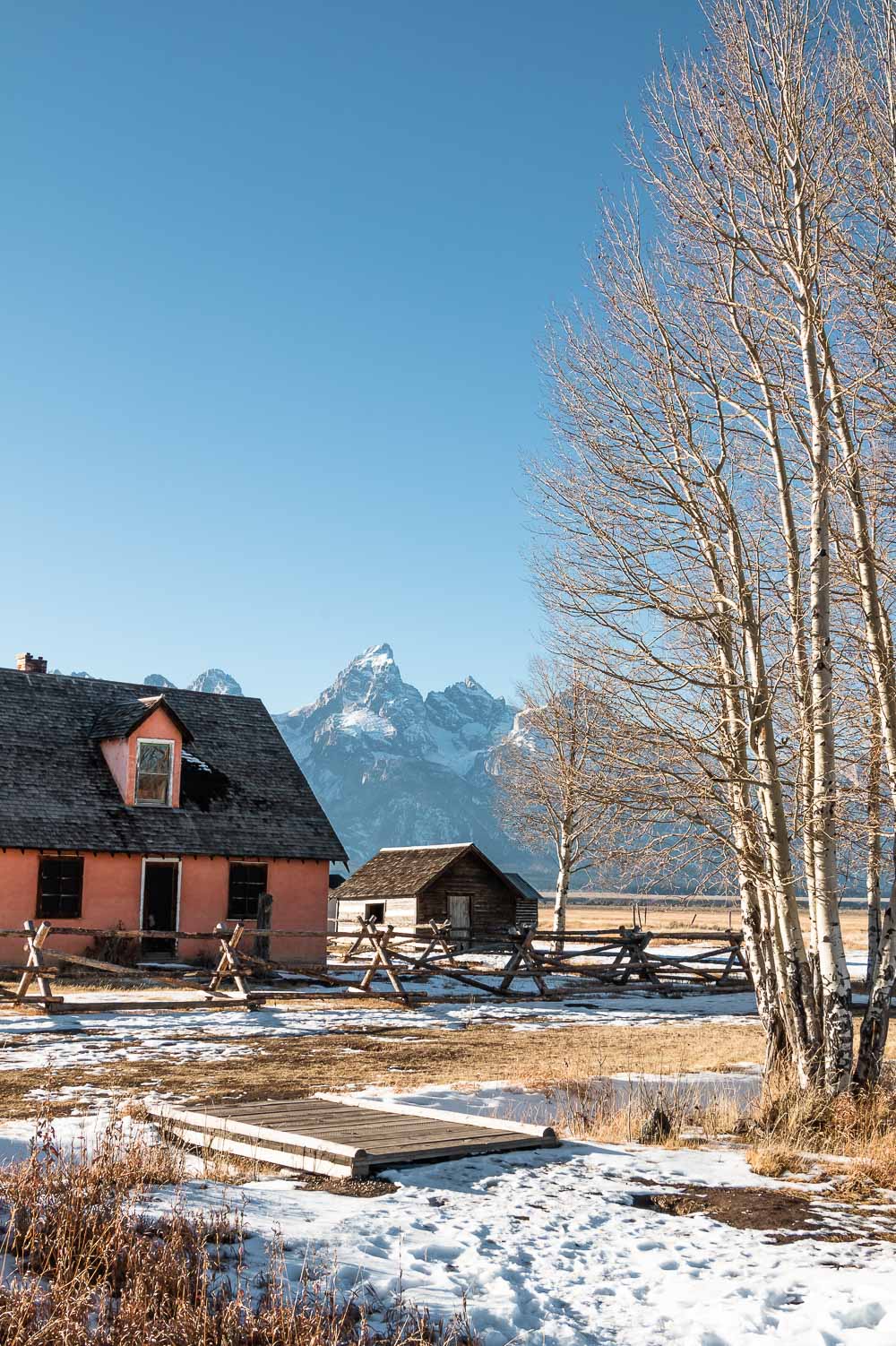
The Pink House
In no way, I was expecting to see a relatively modern, on top of that pink, house during my visit to Mormon Row. Overshadowing all other structures, it certainly arises curiosity. Interestingly enough, the house was built in 1934 and belonged to John Moulton. The choice of color for the new wooden house that replaced a little cabin the family had lived in was a homecoming surprise for John’s wife, Bartha. While the woman was in the hospital, John repainted the building. Bartha didn’t like the salmon pink color but appreciated her husband’s effort. So the house kept its odd hue.
Andy Chambers Homestead
Andy Chambers Homestead is hard to miss during a short visit to Mormon Row. It was the last abode to be built in Grovont in 1917 and still remains the best preserved homestead on Mormon Row.
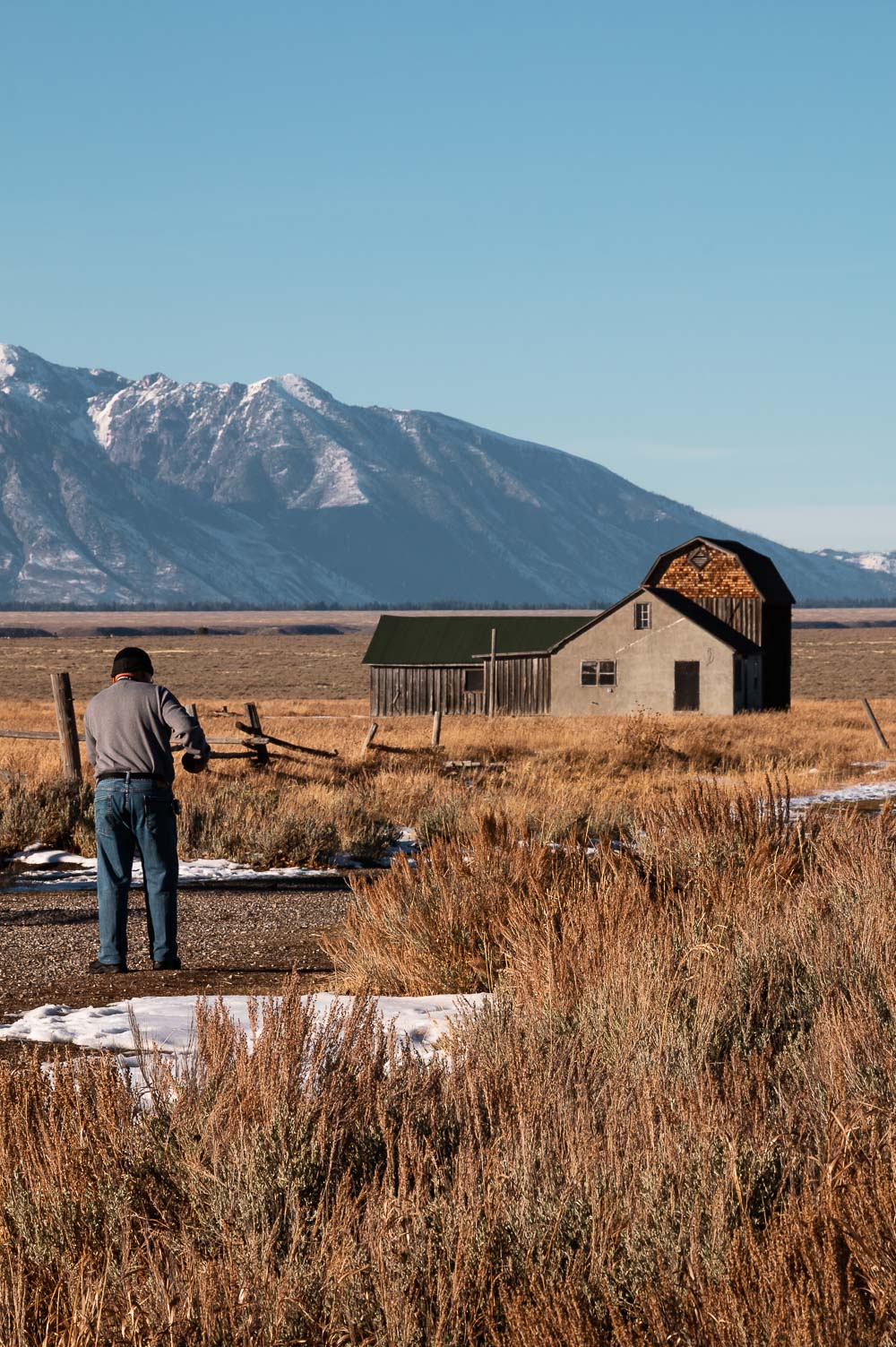
Thomas Murphy Barn
Sitting at the far end of the settlement, a small homestead belonged to Thomas Murphy who had arrived in Jackson Hole in 1908. In 1920, Murphy sold its property to Joe Heninger. The new owner offered his homestead as a resting place for mail drivers traversing along Jackson – Moron route in the winter season.
Clark and Veda Moulton Homestead
The Clark and Veda Moulton Homestead was the last private property on Mormon Row. When Clark married Veda in 1936, his father, T.A. Moulton, gave the newlyweds a one-acre plot on his homestead. Clark and Veda built a house, a barn, and some sheds here. Not long ago, you could visit Mormon Row and rent cabins on the property. In 2018, however, the former owners sold the land to the Grand Teton National Park Foundation.
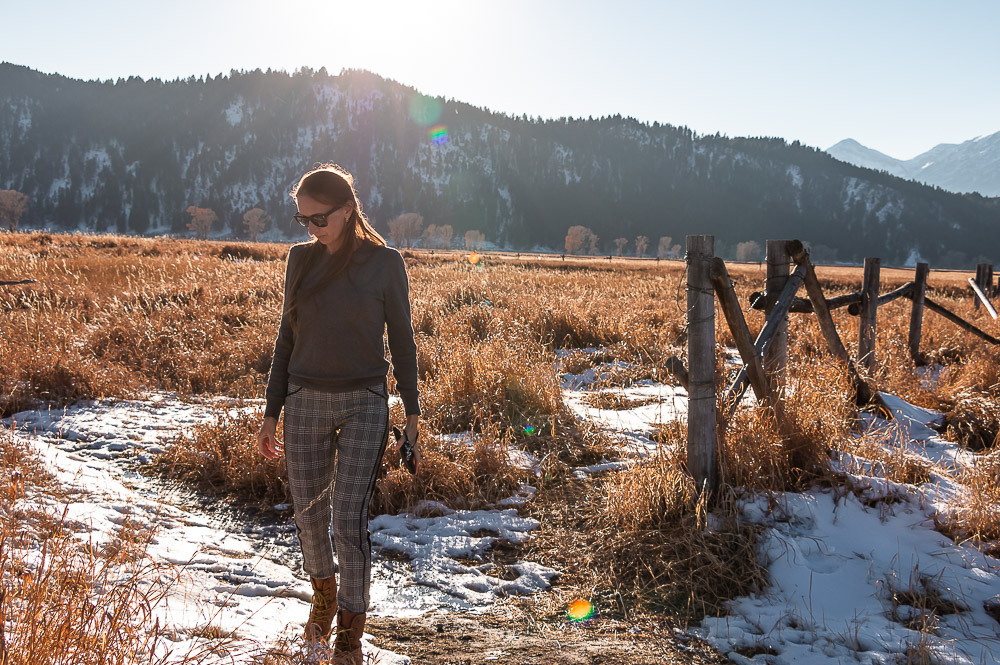
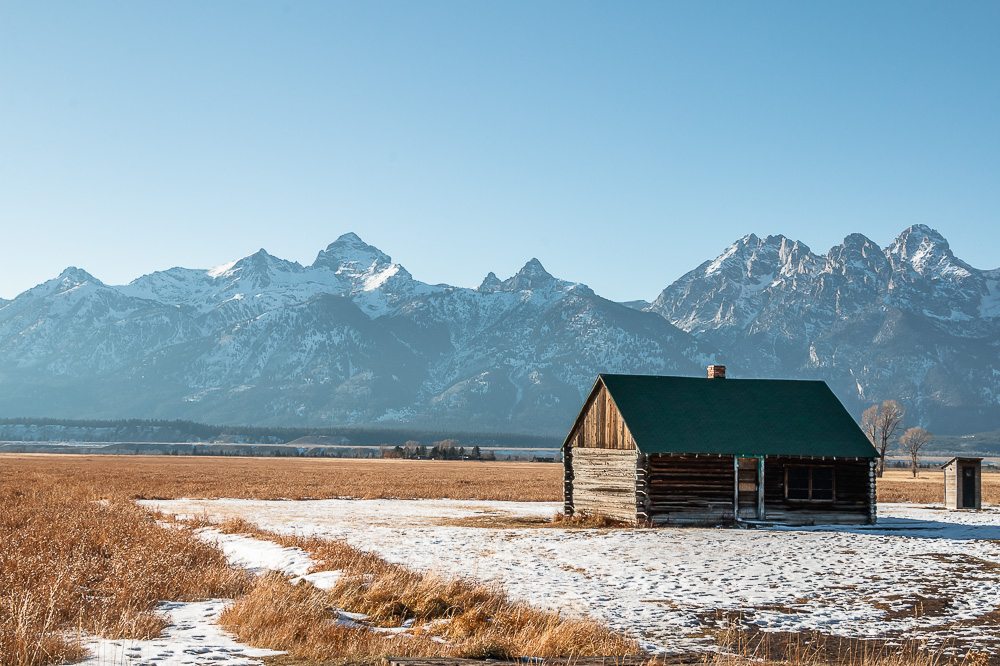
Visit Mormon Row and Learn Its History
Passed on May 20, 1862, the Homestead Act aimed at accelerating the settlement of the western territory of the country. It provided that any adult citizen could claim 160 acres of public land. In response, the claimant was obligated to build a dwelling and cultivate the land. After five years, the new dweller owned the plot free and clear.
The present-day Mormon Row area didn’t wait long for the arrival of new settlers. First permanent dwellers, Mormons from Idaho and Utah, moved to the area in the 1890s. A vivid community, Grovont, was shortly formed. (The word Grovont derives from the Gros Ventre River located near the settlement. The U.S Post Office seemed to find it difficult to pronounce the name of the river and named the community Grovont.)
27 homesteads were quickly erected in the Grovont area. With access to the Gros Ventre River and protection from the winds by Blacktail Butte, the land allowed for crops growing. However, when you visit Mormon Row today, you will hardly believe that once it was a growing community. Only the remains of six dwellings remind of the bygone days.
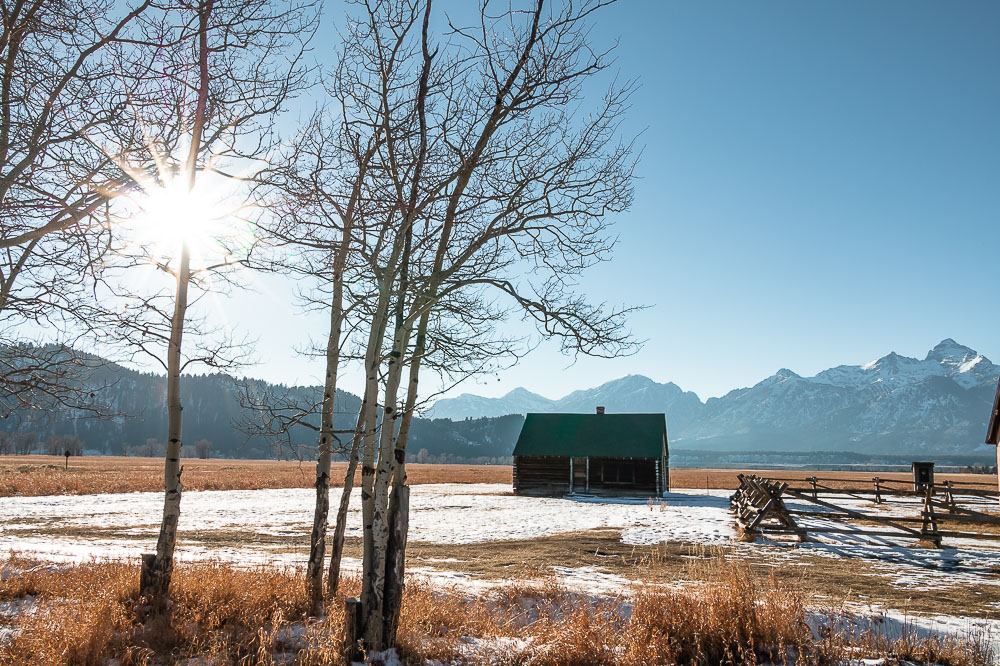
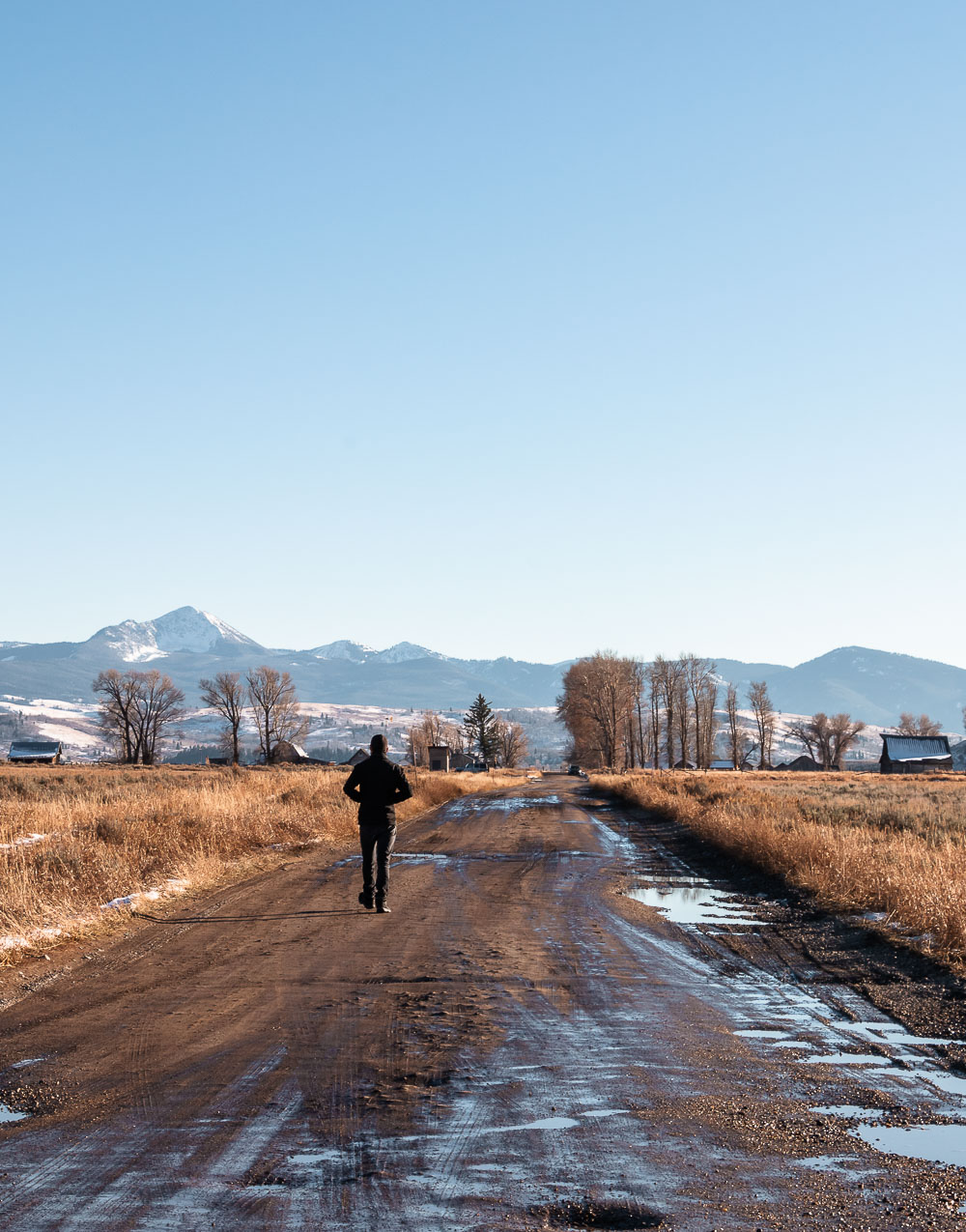
With the creation of the Jackson Hole National Monument in 1943, the residents recognized that their future prospects were diminishing. Surrounded by protected federal lands, the settlers feared that they would lose access to the public land for grazing. Eventually, they started selling their properties to the Snake River Company and leaving Mormon Row.
John Moulton
In 1950 when the Jackson Hole National Monument became part of Grand Teton National Park, even more people abandoned their lands. In 1953, John Moulton also sold his property to Grand Teton National Park with a life lease. He was allowed to live and work on his land. Upon his death, the park would acquire the land and the family would need to leave.
The land didn’t change hands until 1990 when John died as the age of 103. A year later, his family set out on the last visit to Mormon Row to gather their belongings. In 1997, the remaining six homesteads were added to the National Register of Historic Places as an Historic District.
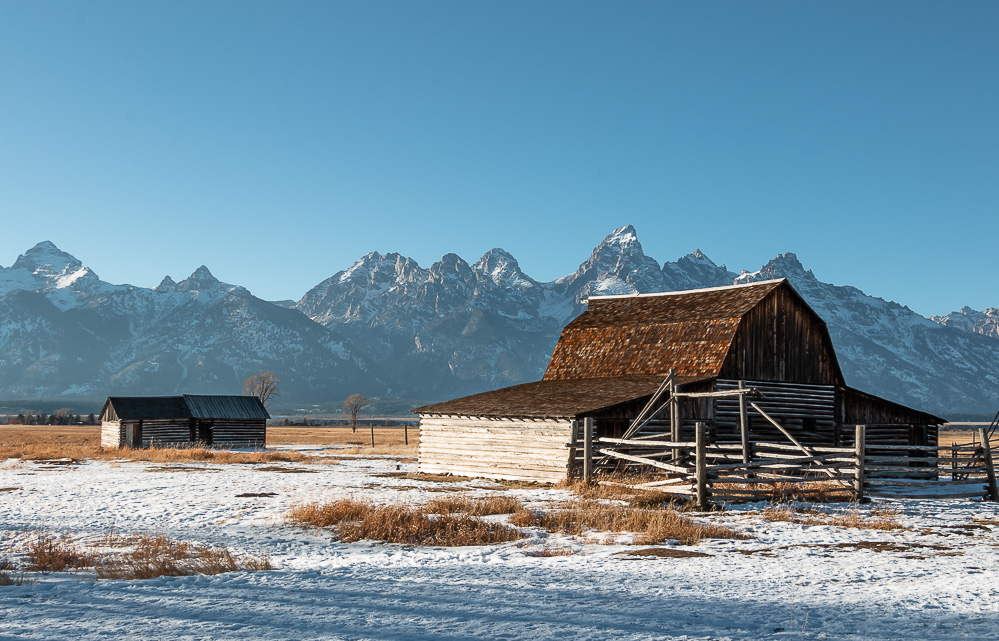
How to Visit Mormon Row
Visit Mormon Row by Car
Most travelers that visit Grand Teton National Park from Jackson swing by Mormon Row before venturing deeper into the park. If you are one of them, hit US-191/US-89 and drive north from Jackson past Moose Junction. Turn right onto Antelope Flats Road and follow it for approximately 1.5 miles. Soon a few abandoned structures on both sides of the dirt road, Mormon Row, come into view. There is a small parking lot where you can park and explore the area on foot. It takes approximately 30 minutes to visit Mormon Row from Jackson.
On a Tour
Many guided tours include a visit to Mormon Row in their itineraries. You can definitely choose this option to see the historic site and learn about its history. Here are some of the guided tours that might be of interest to you.
- Grand Teton National Park – Full-Day Guided Tour from Jackson Hole
- Grand Teton National Park – Private Full-Day Tour from Jackson Hole
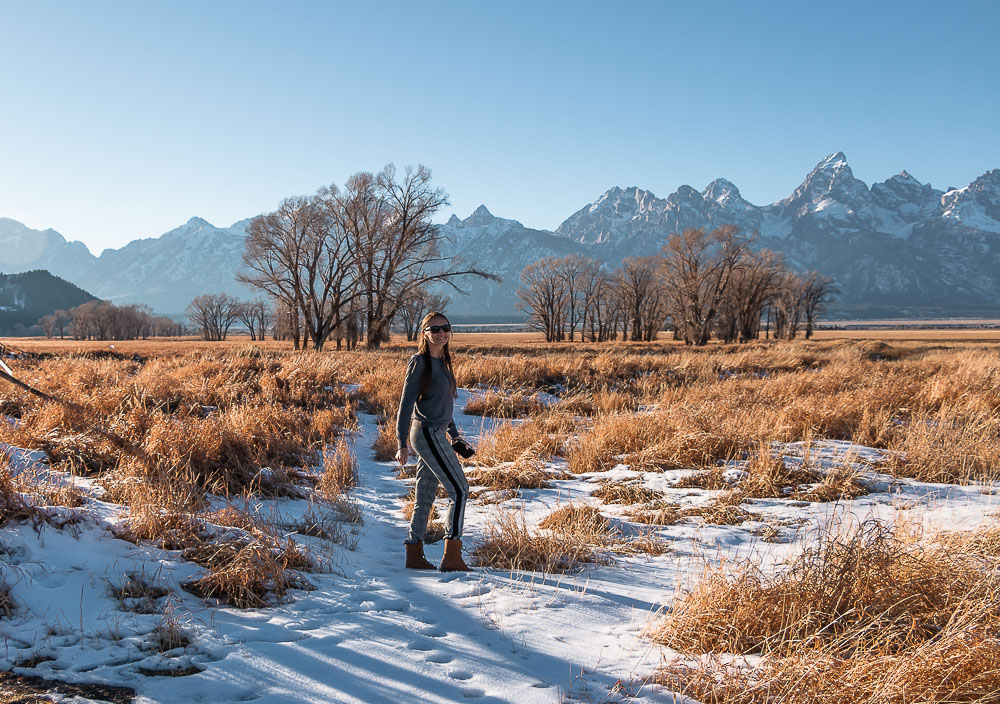
Visit Mormon Row: Helpful Tips
Animal Safety
Chances are you might or might not encounter wildlife during your visit to Mormon Row. However, if you do spot bison or any other animals near the historic barns, don’t try to get as close as possible to them. Keep a safe distance: 25 yards for bison, deer, and elk; 100 yards for bears and wolves. The animals might look calm and friendly, but they are called wild for a reason. And please do not feed them. The wild animals are the ones that will suffer and probably be killed in the end.
How Much Time You Need to Visit Mormon Row
Mormon Row is a rather small area. You can see all of its structures and take stunning pictures of the Teton Range behind them in a few minutes. However, since the homesteads are set on both sides of the dirt road, you might need extra time to walk between them. Thus, devote at least half an hour for your visit to Mormon Row.
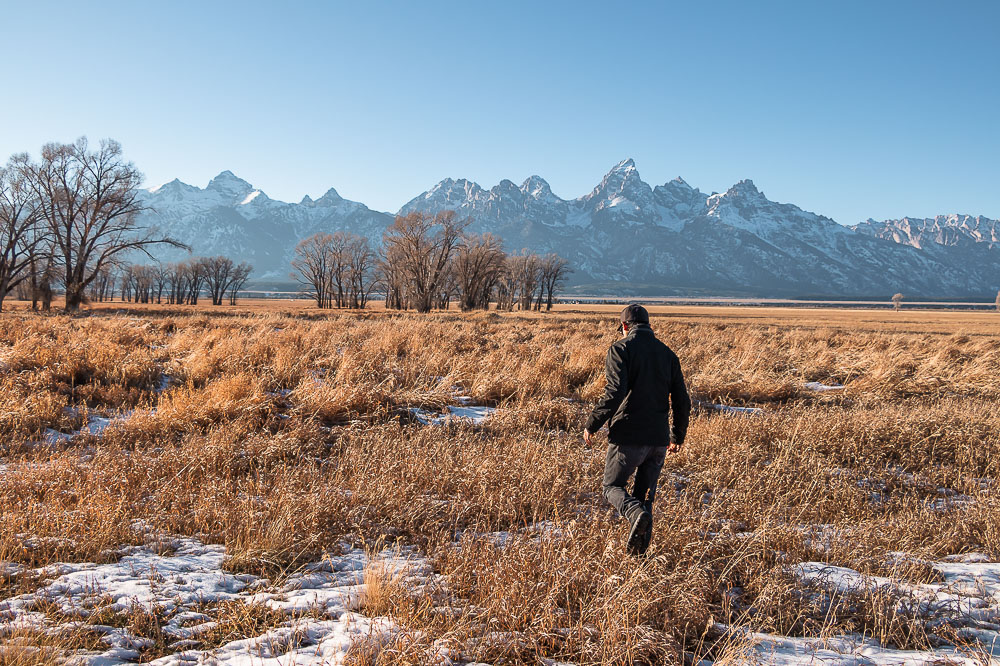
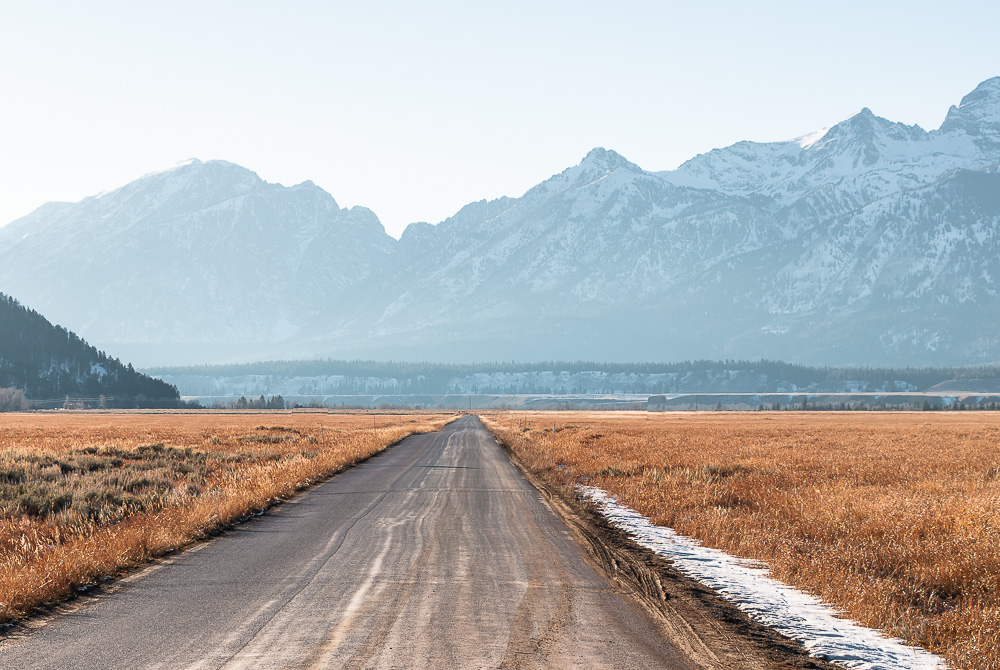
Don’t Rush
On that note, don’t be tempted to drive along Mormon Row from one barn to the other. Walk instead. It is a short distance, but the epic views of the still giants in the background and perfect photo opportunities are endless.
Visit Mormon Row in Winter
Although easy access let you to visit Mormon Row all year round, winter snowfall and snow drifts might cause road closures. Refer for Grand Teton National Park’s website for the latest road information.
Admission
You can visit and explore the Mormon Row Historic District free of charge. To see other areas of Grand Teton National Park, you will be required to get Grand Teton Pass ($30 per vehicle) or America the Beautiful Pass ($80). The latter is valid for one year and covers all national parks and some other areas in the U.S.
Read Next
One Day in Grand Teton National Park. Is it Enough?
